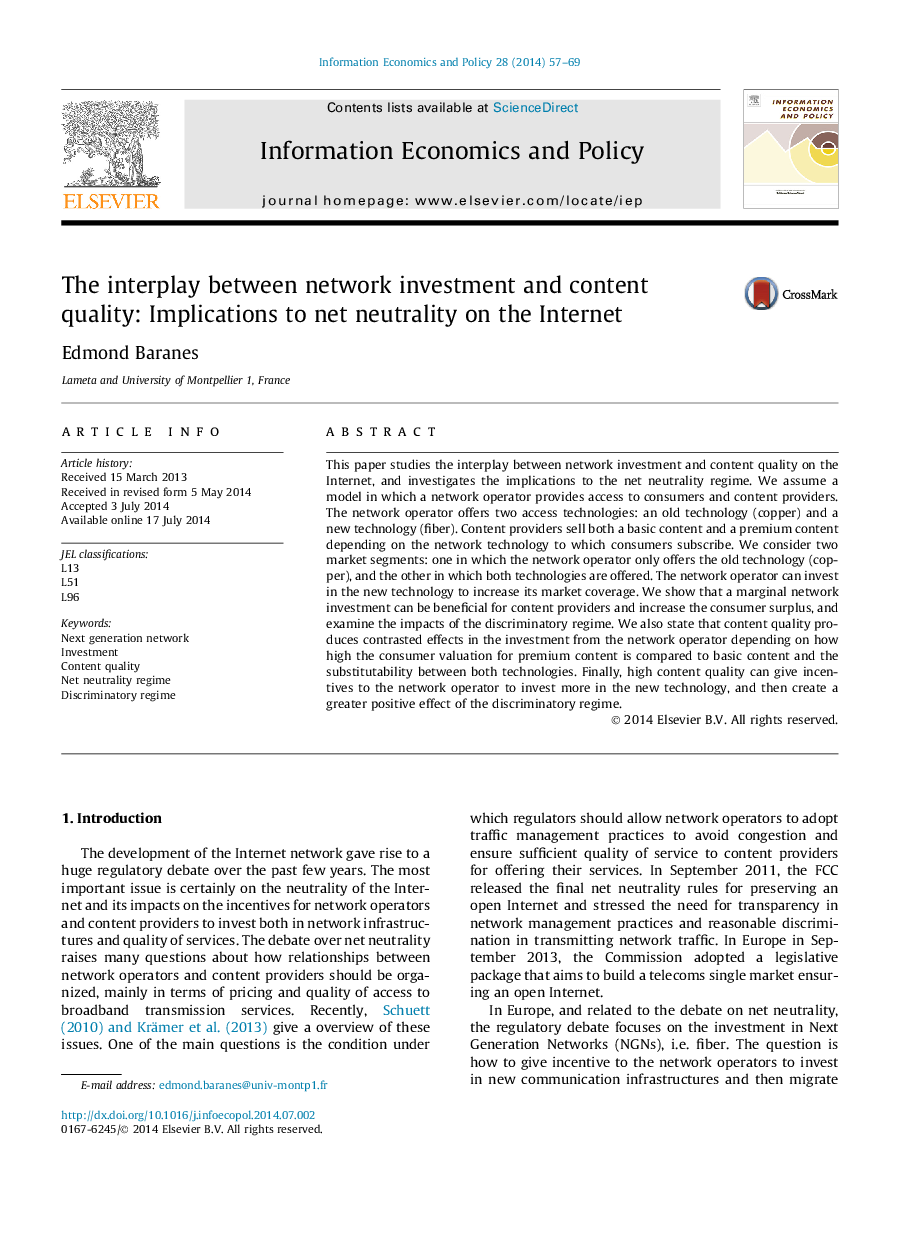| Article ID | Journal | Published Year | Pages | File Type |
|---|---|---|---|---|
| 5075776 | Information Economics and Policy | 2014 | 13 Pages |
â¢We consider that a network operator sells access to consumers and two content providers.â¢The ISP offers two technologies (an old and a new) and can invest to increase its market coverage with the new technology.â¢We show how the network investment depends on the consumer's relative valuation for content.â¢High content quality can give a higher investment incentive in the new technology.â¢The discrimination regime can reinforce this result.
This paper studies the interplay between network investment and content quality on the Internet, and investigates the implications to the net neutrality regime. We assume a model in which a network operator provides access to consumers and content providers. The network operator offers two access technologies: an old technology (copper) and a new technology (fiber). Content providers sell both a basic content and a premium content depending on the network technology to which consumers subscribe. We consider two market segments: one in which the network operator only offers the old technology (copper), and the other in which both technologies are offered. The network operator can invest in the new technology to increase its market coverage. We show that a marginal network investment can be beneficial for content providers and increase the consumer surplus, and examine the impacts of the discriminatory regime. We also state that content quality produces contrasted effects in the investment from the network operator depending on how high the consumer valuation for premium content is compared to basic content and the substitutability between both technologies. Finally, high content quality can give incentives to the network operator to invest more in the new technology, and then create a greater positive effect of the discriminatory regime.
